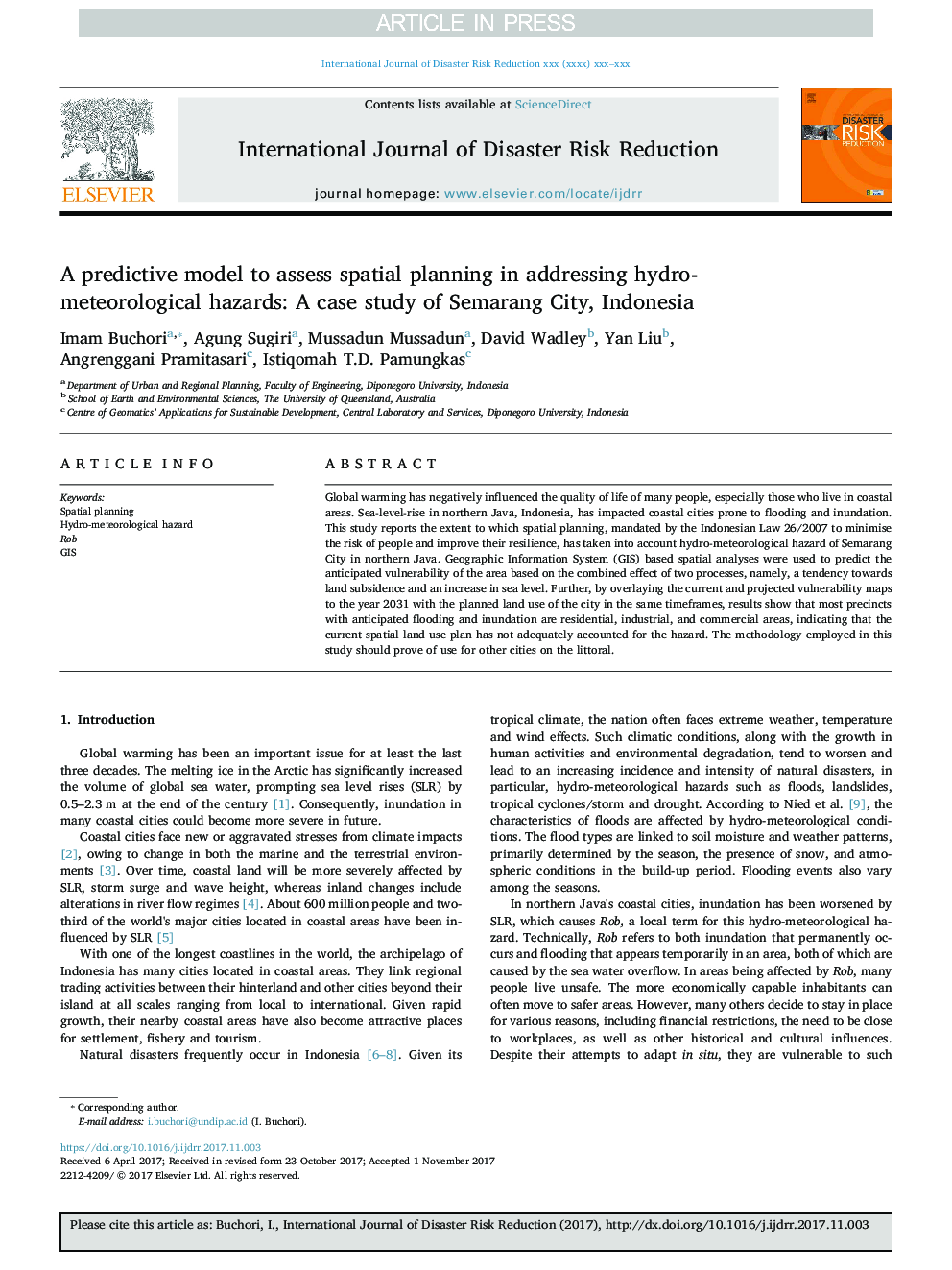| Article ID | Journal | Published Year | Pages | File Type |
|---|---|---|---|---|
| 7472013 | International Journal of Disaster Risk Reduction | 2018 | 12 Pages |
Abstract
Global warming has negatively influenced the quality of life of many people, especially those who live in coastal areas. Sea-level-rise in northern Java, Indonesia, has impacted coastal cities prone to flooding and inundation. This study reports the extent to which spatial planning, mandated by the Indonesian Law 26/2007 to minimise the risk of people and improve their resilience, has taken into account hydro-meteorological hazard of Semarang City in northern Java. Geographic Information System (GIS) based spatial analyses were used to predict the anticipated vulnerability of the area based on the combined effect of two processes, namely, a tendency towards land subsidence and an increase in sea level. Further, by overlaying the current and projected vulnerability maps to the year 2031 with the planned land use of the city in the same timeframes, results show that most precincts with anticipated flooding and inundation are residential, industrial, and commercial areas, indicating that the current spatial land use plan has not adequately accounted for the hazard. The methodology employed in this study should prove of use for other cities on the littoral.
Keywords
Related Topics
Physical Sciences and Engineering
Earth and Planetary Sciences
Geophysics
Authors
Imam Buchori, Agung Sugiri, Mussadun Mussadun, David Wadley, Yan Liu, Angrenggani Pramitasari, Istiqomah T.D. Pamungkas,
